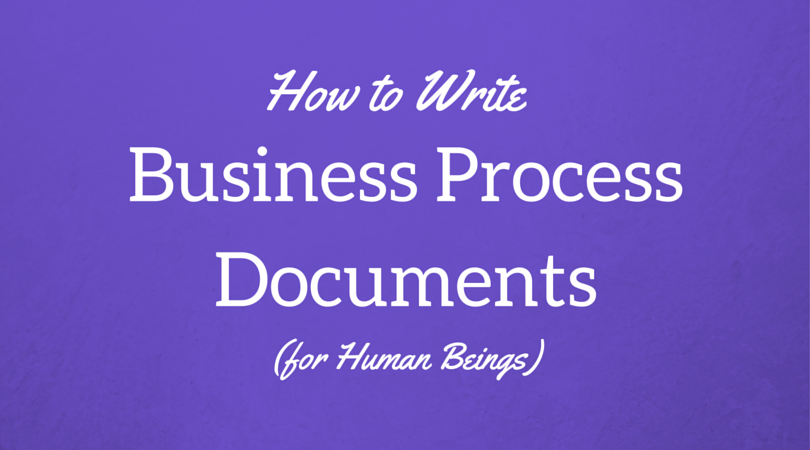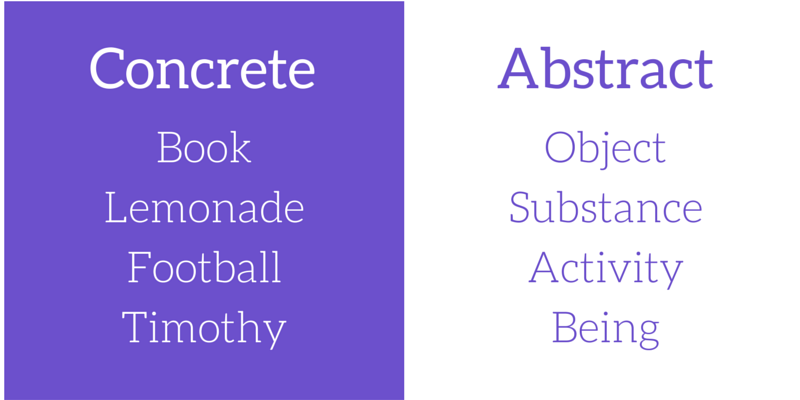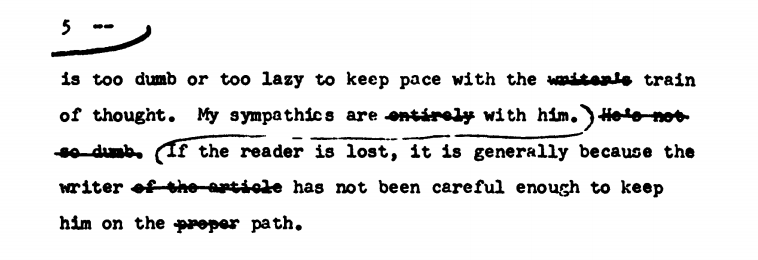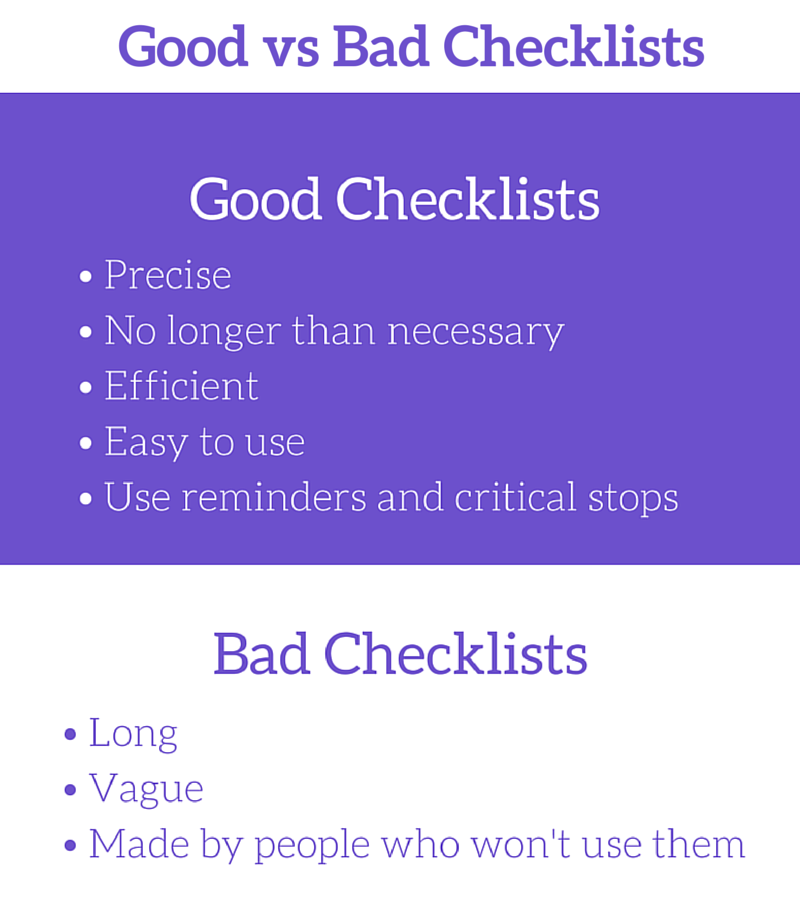
How to be a clear, engaging writer
Humans are bad at getting rid of things. Whether that’s possessions, habits or words, humans are stubborn maximalists at heart, which is why we need to write the way our brain works when taking in new information; it skims, absorbs snippets and pieces them together.
Writing is a skill of minimalism. Your first draft will be terrible, your second draft will be awkward, and your third draft won’t be much good either. Every time you redraft, you’ll find yourself cutting information and thinking ‘does that really need to be in there?’.
This guide teaches how to write the most easily absorbed text, for lazy people, for complex operations, or for content marketing — writing is something we can all get better at.
Clarity above all
There came a point near the end of my school years where we got the freedom to do whatever we wanted during class time, as long as it was relevant to the lesson. It was there I read an essay, in English language class, that has made a huge impact on the way I think and write. A concise, powerful essay by George Orwell from 1946 called Politics and the English Language.
Spoiler: it reads “stop talking so much rubbish, you idiot”.
While Orwell angrily wrote it about the way politicians speak, it applies today to all writers and speakers. When I saw How to Write and Document a Process that Actually Gets Used by Wade Foster – CEO of Zapier, I felt a familiar feeling and went back to read the Orwell essay for the first time in years.
I thought “George Orwell would have some killer business writing tips.”
Politics and the English Language is a short essay, in keeping with a basic rule of writing: quality over quantity. In Orwell’s words, “If it is possible to cut a word out, always cut it out”. In my words, “Cut words if you can” (take that, George).
For Orwell, clarity is the core of writing well. According to his way of thinking, bad writers are pretentious, arrogant and more concerned with sounding intelligent than writing for others to understand. To understand how to write clear process documents, first understand how to write clearly.
Clutter-free business writing tips
Mostly we want to discuss the issue of clutter. Imagine you’ve just opened up a checklist and don’t have all day to get the content executed. Which of these would you rather read as the first point?
1) “Create custom credentials (username and password in accordance with prerequisite complexity protocol) and ensure execution of the correct implementation of the internal Company email system for new personnel”
2) “Sign new employees up for company email”
If you’re still with me after that horrible string of words, I consider myself lucky.
Don’t rely on luck; make your business process documents a joy to read, or, at the very least, easy to use. These business writing tips will make your life easier as well as the lives of anyone reading what you write. In the humble opinion of George Orwell, if you can’t avoid these four things he will hate your writing and not read your process.

1. Cliches and metaphors
Why say ‘at this present moment’ when you could say ‘now’? I break this rule daily, but writing lean content is slowly teaching me not to, even though I’m scarred from past work in the dark days (when I had to write countless 1,000 word articles a day about various bathroom-related services so I could pay bills). I was encouraged to clutter my horrendously keyword-stuffed articles with extra words just to fill space. When writing valuable content (read: content unrelated to ‘bathroom installation professionals London’), the rules change.
Examples: take one for the team, there’s a fine line, all dressed up with nowhere to go, smell something fishy.
2. Bloated verb phrases
Don’t speak like a lawyer. While lawyers are known as clear language masters, bear in mind it’s only clear to people who are fluent in legalese. For the rest of us, a tone like I’m using for this article will do. Bloated verb phrases, as I’m going to call them (Orwell called them ‘operators or verbal false limbs’, erm?), occur when verbs are complexly connected with conjunctions. To clear this up a bit, compare these two examples.
1) This system has been installed for the effect of the provision of notifications to the manager.
2) This system notifies the manager.
The amount of words I could cut from the first example makes me nervous (update: I can’t believe it’s still there so far into the drafting process). See how much better #2 is? So will everyone else. It’s likely you’re not trying to write a process without legal loopholes, so write like you would speak and beware of using ‘which’, ‘that’, ‘has’ and ‘of’. Do a Ctrl+F on these words after writing – they can be good indications for badly structured, bloated sentences.
Examples: has the effect of (affects), with reference to (referencing), bearing a likeness to (similar), with regard to (about).
3. Pretentious words
Most Latin and Greek words we use in the English language have an Anglo-Saxon version. Get vs. Acquire, Think vs. Ponder – there is usually a simpler way of saying things. Not to say all words based on Latin and Greek are pretentious, but Orwell says these words are often used to “dress up a simple statement and give an air of scientific impartiality”. Your reader will decide whether you have authority, it doesn’t matter if you use intelligent-sounding words or not.
Examples: expedite, ameliorate, extraneous, subterranean, clandestine.
4. Meaningless words
Words with private meanings have no meaning at all. Be careful of statements that are trying to sound impressive through comparisons to unmentioned things, such as “the most efficient project management system”. What is the writer’s private meaning for efficient here? A project management system’s efficiency could be measured by user experience, server load time, or any number of factors; this statement means nothing without more details.
Remember you’re trying to convey meaning, don’t assume the reader knows what you’re talking about. Glen Long from BoostBlogTraffic puts it well in this article, writing “Your writing is the instruction manual for assembling ideas in your reader’s mind.”.
Meaning through words comes with concrete terms, not debatable, abstract ones.

(I’m not using concrete and abstract in the technical sense here, just as concepts.)
On Writing Well
Enough about Orwell and a quick look at a slightly more modern text. William Zinsser’s 1976 book On Writing Well, (revised in 2006 after 30 further years of research) believes clarity comes from getting rid of clutter.
“Clutter is the disease of American writing. We are a society strangling in unnecessary words, circular constructions, pompous frills and meaningless jargon… It won’t do to say that the reader is too dumb or too lazy to keep pace with the train of thought. If the reader is lost, it’s usually because the writer hasn’t been careful enough.”
A tome of near-Biblical proportions for content writers, On Writing Well comes with a hand-written draft for the reader to see how much can be cut out (even, in this case, after five full rewrites).

In the age of business jargon and management buzzwords, see Zinsser’s stance on it all:
Don’t dialogue with someone you can talk to. Don’t interface with anybody.
I’ll add a few of my own. Don’t fire off an email when you can just send it; don’t help out when you can help, and don’t do something for the reason of when you could do it because of.
Refined through experience
Shooting forward in time again to familiar ground for me, Atul Gawande’s The Checklist Manifesto. In this book the author meets with checklist experts to study their methods and learn how to write the perfect checklist. Gawande visits a Boeing facility and interviews Daniel Boorman, a production test pilot in charge of writing flight checklists since 2001. As you might expect, he knows a thing or two about writing user-friendly processes.
Boorman characterizes bad checklists (and breaks Orwell’s rules):
“There are good checklists and bad… bad checklists are vague and imprecise. They are too long; they are hard to use, and they are impractical. They are made by desk jockeys with no awareness of the situations in which they are to be deployed. They treat the people using the tools as dumb and try to spell out every single step. They turn people’s brains off rather than turn them on.”
And good ones:
“Good checklists, on the other hand, are precise. They are efficient, to the point and easy to use even in the most difficult situations. They do not try to spell out everything. – a checklist cannot fly a plane. Instead they provide reminders of only the most critical and important steps – the ones that even the highly skilled professionals could miss. Good checklists are, above all, practical.”
Here at Process Street we keep our internal checklist templates continuously updated, in constant nth draft mode. It’s important for processes to grow with your business and scale with your growth, which is why we use our own simple software for the job.
A quick reference guide to Boorman’s criteria – do Boorman’s words remind you of Orwell’s, by any chance? Here are the key points.

For more information, see my Checklist Manifesto Review and Vinay’s summary over at Abstract Living.
The balance between comprehensive and simple
Finding the near-mythical twilight zone between comprehensive and simple is a problem any creator (writer, programmer, graphic designer) will face. Starting from the ground up is the only way to do it. Even Boorman, Orwell, Zinsser and Gawande couldn’t write great business process documents without editing or drafting. Remember that excerpt from On Writing Well? That was an edited 5th draft and it was still more cluttered than the version that eventually went to print.
You’re not going to get it right immediately but you are going to draft, test and rewrite – probably for a long time.
In the end you’ll find something that works for you, your team and even people unfamiliar with what your business does.
Process Street makes creating easy-to-use checklists and processes simple – now you know how to write a useful checklist, why don’t you go ahead and give it a try?
To end with a quote from yet another irrelevant old guy:
If you can’t explain something to a six-year-old, you really don’t understand it yourself. – Albert Einstein
What kind of techniques do you use to make sure your writing isn’t terrible? Share any tips in the comments below.







 Workflows
Workflows Projects
Projects Data Sets
Data Sets Forms
Forms Pages
Pages Automations
Automations Analytics
Analytics Apps
Apps Integrations
Integrations
 Property management
Property management
 Human resources
Human resources
 Customer management
Customer management
 Information technology
Information technology



Benjamin Brandall
Benjamin Brandall is a content marketer at Process Street.